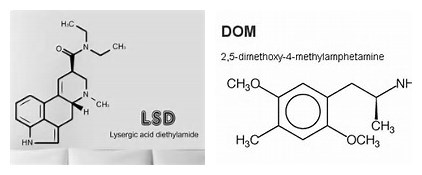At some time in the last I looked through an article about LSD and STP drugs, it described that those of the psychedelic nature, such as LSD and STP, can cause people of the 1960s to have an intense effect on the psyche in their lives.
It cause a person to be forever changed, harmed, and debilitated by their experience of the drug through only one use.
Here my article is to correct the misconceptions provided within the article.
LSD is a chemical which known as Lysergic acid diethylamide. STP is also called DOM or 2,5-Dimethoxy-4-methylamphetamine. Both have long durations, between 7-20 hours dependent on dosage, and cause hallucinations, synethesia, vivid visuals, pupil dilation, reduced appetite, and other psychedelic effects.

The first misconception is that the drug stays with them their entire life. While it’s impossible to deny that a person can forget such an experience, the actual substances leave the body relatively quickly. In the article it is said that the drugs are able to be detected after death through either your hair follicles or an autopsy. This is completely false, as the chemistry of LSD and DOM break-down hours after taking it. Within a few days, at max one week, all physiological evidence of taking the drug has completely left the body. LSD is actually extremely non-toxic, and it is almost impossible to overdose on it. There are many myths concerning LSD that claim it stays in the spinal cord and is slowly released which is what causes flashbacks. Flashbacks are not cause through this method, but are instead cause due to psychological issues. Flashbacks are not common, and only about 2-3% of users report ever experiencing one.
The next misconception is the idea that a person would never come down from their trip after taking one of these two substances. This is completely untrue. The effects, as previously stated, can last anywhere from 7 – 20 hours depending on the dose taken and rarely last longer than this. After a good night’s sleep, the only remnants of the trip that remain are the memory of it. There may be awareness present in an individual that things are different after having taken the drug, but this is true of any experience. If you go on a trip to Italy for instance, having never been there, you’re certainly never to forget it. It is the same for those that have experienced a psychedelic trip. A user is by no means under control of the substance after use. I also would like to mention that neither of these drugs classifies as a narcotic.
It is true that some people have been completely debilitated due to the usage of these substances. However, it is unethical, false, and wrong to assume that this will always happen or that it is even common. Most users actually maintain a quality of life either equal to or greater than before their experience, and most never take it more than one time. Like any substance, it is those that abuse the drug heavily that tend to fall away from reality. Alcohol is the same in many respects, in that if not used moderately it can cause drastic changes in a person, and the same can be said of anyone who abuses anything. Even businessmen can abandon their homes and family for their work, similar in respect to the way a person abandons for drugs.
LSD and DOM do have a potential to awaken mental disorders in those that use them frequently. However, it’s important to realize that these disorders are usually already present in the individual, only masked or have not surfaced in their life yet. As for actual physiological damage done to the brain, there is no evidence or research that has ever shown this to be the case with a psychedelic. Most drugs users who were institutionalized from the 1960’s were either done so through common misunderstanding in psychology at the time or because of Government experiments on unsuspecting people. MK-Ultra, a Federal experiment with LSD, actually gave LSD to people who had no idea they were being given the drug at all. This caused them to actually believe they were going insane, and for good reason. Imagine if all of a sudden, for no reason at all, your whole world turned upside down. You would probably go crazy as well.
It’s true that these drugs are not to be taken lightly, and the 1960s was a time when people were taking them in doses that were probably far beyond what should be taken. However, we must also present facts when arguing for any subject, despite how much those facts might disagree with our dispositions. I hope that my article helped reveal a little truth to claims about what facts are known, researched, documented, and studied, and which facts are actually myths and misconceptions.

